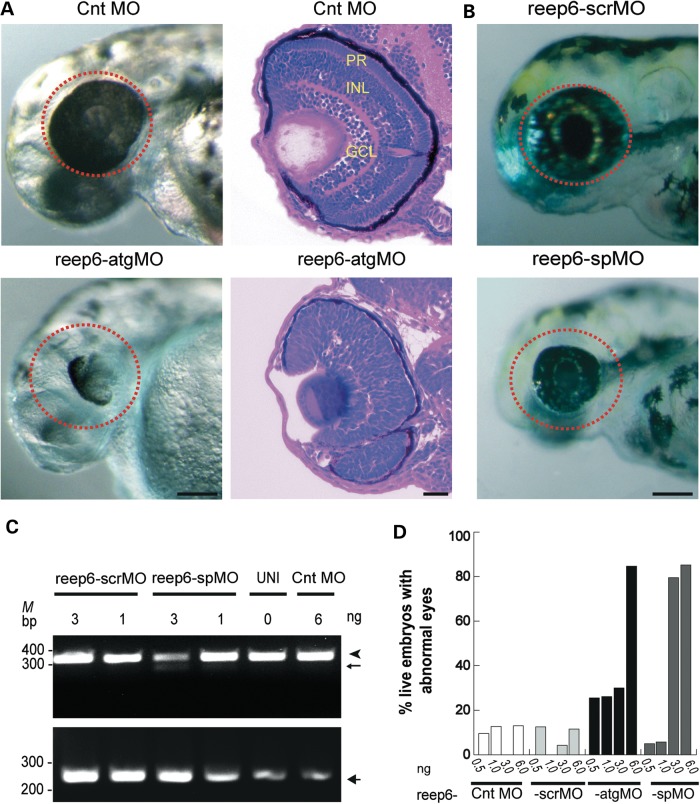Figure 5.
reep6 knockdown in zebrafish leads to abnormal eye development. (A) The eyes of morphants injected with 6 ng of control (Cnt MO) or translation blocking (reep6-atgMO) morpholinos observed at 72 hpf (left panels). Red circles denote the compromised eye development in the morphant (reep6-atgMO) compared with the Cnt MO injected embryos. H&E stained sections of retina from the morphants injected with Cnt MO or reep6-atgMO morpholinos (3 ng), at 72 hpf (right panels). The morphants injected with Cnt MO had normally laminated retina with discriminable PR, INL and GCL, whereas reep6-atgMO-injected retina had no proper lamination. Scale bar = 100 μm. (B) The eyes of morphants (denoted by red circles) injected with scrambled (scrMO) or splice blocking (reep6-spMO) morpholino, examined at 72 hpf. The scrMO did not elicit a visible effect on eye development whereas spMO compromised the eye development. Scale bar = 100 μm. (C) The photograph of RT-PCR products showing exon-skipping by reep6-spMO. Total RNA from individual embryos was used for RT-PCR. Splice blocking resulted in an additional smaller band (<300 bp, thin arrow) along with the WT band (343 bp, arrowhead). The bottom panel shows beta-actin (263 bp, thick arrow) control for respective samples. M indicates size maker. (D) Quantification of abnormal eyes injected with Cnt MO, scrMO, atgMO and spMO morpholinos. The x- and y- axes indicate injected morpholino and percentage of live embryos with abnormal eyes, respectively. UNI and Cnt MO indicate uninjected and control MO injected samples, respectively. MO concentration in nanograms is indicated.

